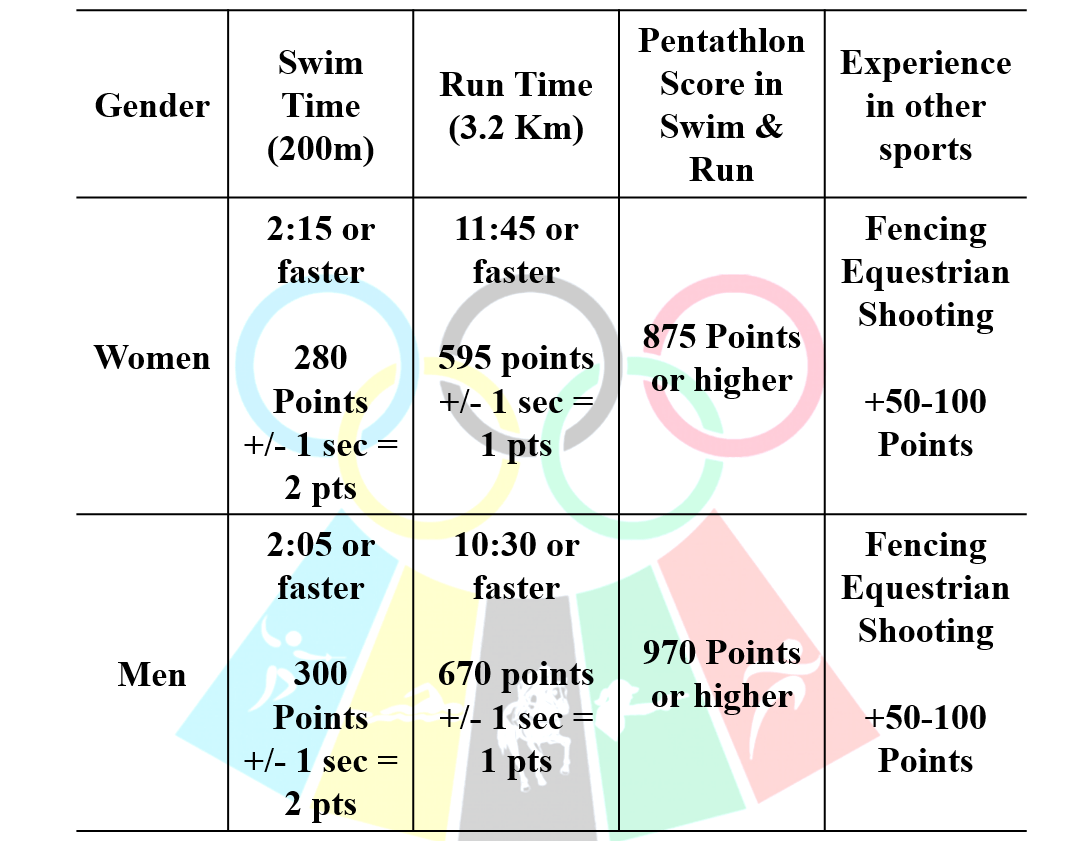Recruiting Program
Level – I

Level – I
Level I recruitment program starts with introduction to pentathlon using variety of ways. This Level targets younger athletes (12-16 y.o.) who have potential for Pentathlon through regional competitions, Laser Run events, Biathle/Triathle events, Obstacle Racing events, Pentathlon Experience, running-swimming-fencing, and etc.
It is an opportunity for willing individuals to engage in training for Modern Pentathlon, to acquire necessary technical skills and improve general fitness. Commitment to training is essential because the most important objective is to ‘learn to train’ followed by ‘learning to compete’. These are elementary requirements for any entry-level athlete to progress through the MPAH’s Pathway system to sporting excellence.
The main focus of this group is Youth and Junior Nationals, Youth and Junior World Championships, Youth Olympic Games. We anticipate to touch thousands of young athletes through Level 1 program. The program will provide help with training in Pentathlon, consulting coaches, coaches clinics, and training camps in various regions of the state. The most talented athletes from this program may move to the Level II or Elite Level Training Group.
Options for training depending on location include the local and regional clubs, localized individual training (we help to identify local coaches who can help in each discipline) attending MPAH Development camps and mentoring.
This type of training continues thru all levels of youth participation until an athlete is ready to progress to the Junior/Senior level and consider making a serious commitment to the sport.
Level – II

Level – I I
The MPAH Level II Elite Recruitment Program is an ongoing process with regular promotions of Modern Pentathlon. In Level II, Modern Pentathlon Association Haryana is looking for high school and collegiate runners with a swimming background and swimmers with a running background. Recent point system changes gave more advantage for runners who can swim 2:05-2:25 (men) or 2:25-2:45 (women). However, having a swimming background is still important for elite level recruits. It is very hard to improve swimming at age 16+ and reach above mentioned times with little or no swimming background, whereas running can still be developed at later ages.
At Level II, in addition to the runners/swimmers we will also recruit other athletes (particularly fencers) as well, if they have the potential and interest to reach the elite level of performance in Pentathlon. The recruitment plan includes advertising Modern Pentathlon through social media platforms (websites, Facebook, Twitter, Instagram, etc), running/swimming/fencing magazines, as well as attending the various State Championships, to identify potential elite level athletes, direct them locally and then bringing them to the National Modern Pentathlon Academy (NMPA) for exposure and training and selecting and nurturing the best athletes for elite training.
Training Level II athletes who have been identified thru the initial introductory phase will begin with direction to local and regional mentors and events. Much like Level I, options for training depend on location and include the local and regional clubs, localized individual training (we help to identify local coaches who can help in each discipline) attending MPAH Development camps and mentoring.
These athletes will create a pipeline which directly feeds our elite program. When ready, outstanding individuals will be invited to join our Elite Recruitment Program at the NMPA.
Benchmarks For Level – I I

Benchmarks For Level – I I
In order to be invited for a training camp at the NMPA, women have to score a total of 925 points and men a total of 1020 points in the swimming + running + experience matrix. Adjustments are made based on age for younger recruits (30 points for every year).
Athletes can stay in this program up to one year as long as they accomplish individual benchmarks. At the end of the one year training, elite level recruits are expected to reach top-20 in the world and move to the Elite Training Group.
